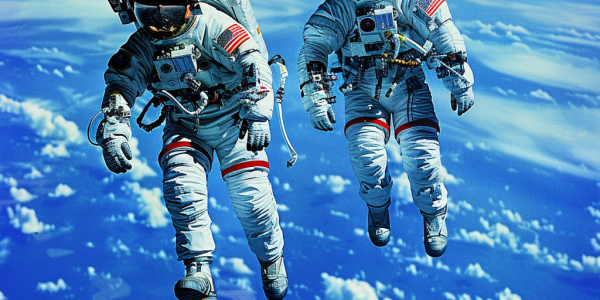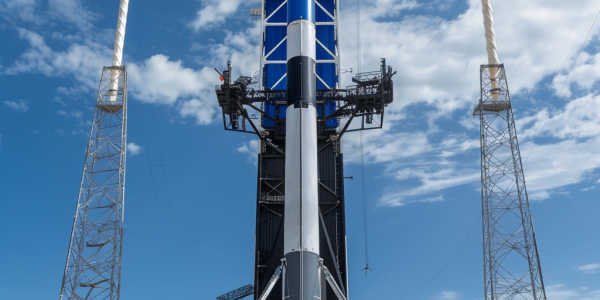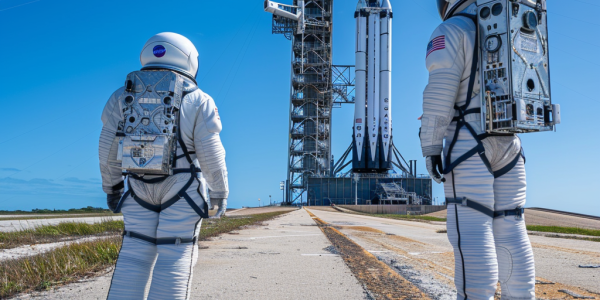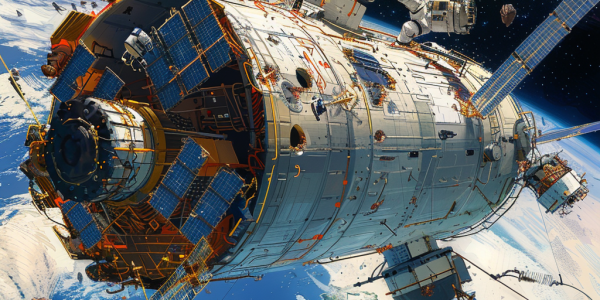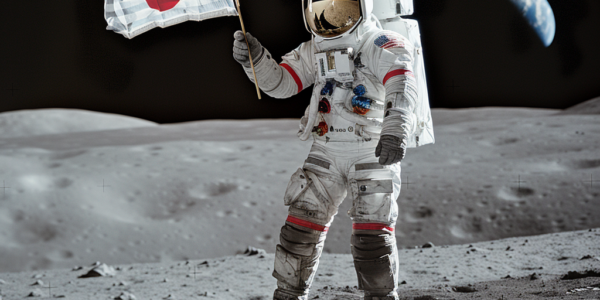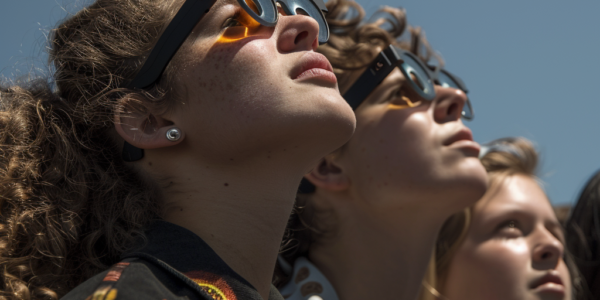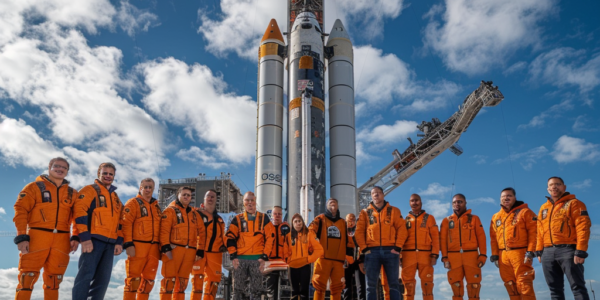Shenzhou-18 Crew Completes Record-Breaking Spacewalk Mission
On May 28, 2024, the Shenzhou-18 crew members aboard China’s orbiting space station successfully completed their first spacewalk mission, setting a new record for the longest single spacewalk by Chinese astronauts. This achievement, facilitated by the space station’s robotic arm and ground support, highlights China’s dedication to advancing scientific knowledge and technology in space exploration.
Boeing’s Starliner spacecraft set for historic human crew mission to ISS
Boeing’s spacecraft, Starliner, is set to launch to the International Space Station with a human crew for the first time. Despite setbacks and delays, the mission is crucial for Boeing’s reputation and the future of US space exploration. Competition with SpaceX adds further significance to this historic launch.
NASA Prepares for Moon Return with Arizona Desert Tests
NASA is actively preparing for a return lunar visit by conducting tests in the Arizona desert to simulate the lunar environment. The ultimate goal is to establish a Moon base and accelerate the process of sending humans to Mars. Key preparations include constructing a Moon base and a railway station on the lunar surface, focusing on scientific exploration and international collaboration. Astronauts are honing their skills through moonwalk simulations in Arizona, utilizing augmented reality technology to navigate the moon’s South Pole region.
Boeing and NASA to Launch Crewed Starliner Spacecraft in Historic Mission
Boeing and NASA are set to launch the crewed Starliner spacecraft on its inaugural mission to the International Space Station, marking a significant milestone in space exploration. After overcoming challenges, the team is ready for the historic launch, joining SpaceX’s Crew Dragon in regular missions. The collaboration between SpaceX and Boeing under NASA’s Commercial Crew Program highlights the advancements in crewed space missions. Anticipation is high for the success of the upcoming mission, signaling a new era in space exploration.
China’s Tiangong Space Station Damaged by Debris Strike, Astronauts Conduct Repairs
China’s Tiangong space station faced a setback after being damaged by a debris strike, resulting in a partial loss of power supply. Astronauts from the Shenzhou 17 mission successfully repaired the damage through spacewalks. China plans to enhance its space debris procedures to prevent future incidents, highlighting the growing concern of human-generated orbital debris and the need for proactive measures to protect space infrastructure.
Japanese Astronaut to Make History as First Non-American to Land on the Moon in NASA’s Upcoming Artemis Missions
Japanese astronaut to make history as the first non-American to set foot on the Moon during NASA’s Artemis missions, marking a significant milestone in space exploration. Japan’s commitment to the program includes supplying a rover, emphasizing the collaborative efforts between the two nations. The Artemis program aims to establish a sustained lunar presence in preparation for potential missions to Mars, with plans for the first woman and person of color to land on the Moon. The partnership between the United States and Japan reflects the shared commitment to advancing space exploration and scientific discovery.
Artemis Astronauts’ Moonwalk Should Include Zoom Call for Students
Artemis astronauts are scheduled to walk on the moon in late 2026, conducting scientific exploration and leaving behind instruments for long-term study. But in addition to their mission objectives, they should also engage with young students around the world through a ‘Ask the Artemis Astronauts’ event, providing inspiration for the new generation of explorers.
Understanding the Dangers of Viewing the 2024 Solar Eclipse
Millions of Americans are eagerly anticipating the upcoming solar eclipse on April 8, 2024. However, it’s crucial to understand the potential dangers associated with viewing this natural phenomenon. NASA emphasizes the importance of eye protection during both partial and total solar eclipses. Looking directly at the sun, even during a partial eclipse, can lead to eye damage. Dr. Yehia Hashad, an ophthalmologist and retinal specialist at Bausch + Lomb, warns that there is no safe level of exposure to solar ultraviolet rays or infrared radiation. Given the dangers associated with viewing a solar eclipse, it’s crucial to use special glasses specifically designed for eclipse viewing.
NASA Opens Application Window for New Astronauts
NASA is seeking new astronauts with a low acceptance rate of 0.083%. The criteria for becoming an astronaut in 2024 are vastly different from those of the 1960s, with a focus on diversity and inclusion. Victor Glover, a seasoned astronaut, will pilot NASA’s Artemis II mission to the moon next year, showcasing the evolving landscape of space exploration.
New NASA Astronauts Prepare for Moon Missions and Private Space Stations
New NASA astronauts and astronaut candidates from NASA and the Canadian Space Agency are preparing for missions to the moon and potential private space stations, showcasing their dedication and enthusiasm for turning science fiction into reality. Their diverse backgrounds and training demonstrate the commitment required for space exploration, reflecting the ongoing advancements and opportunities in the field.

